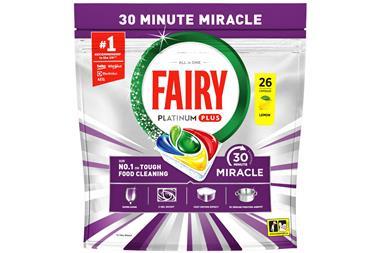Overdue consolidation in chilled food is a key trend in the latest run of mergers and acquisitions activity. Neil Sutton sums it up
Corporate finance activity falls into three areas: private equity-funded deals, trade deals by players in the sector, and flotations. Since February, there has been much activity in each of these areas.
On the private equity front, Montagu has exited from Marlow Foods in its sale to Premier Foods (now floated but previously backed by Hicks, Muse). This gives Premier a significant brand presence in chilled foods, which should show strong growth ahead of traditional ambient brands. The attractions of Quorn include new channels (foodservice), international growth opportunities, and it is also one of the few significant brands in its category.
Other private equity activity included Gilde’s acquisition of DSM Bakery Ingredients for £135m and Vestar Capital Partners’ acquisition of Cesare Fiorucci Spa in Italy for €360m. There was also significant private equity interest in Danone’s sale of HP to Heinz for £470m. In contrast to the quiet “non-auction” process for the sale of Quorn, this was a “full-on” auction, which also showed trade players out in force. This sale had players such as ABF, McCormick, Mitsukan and Premier slugging it out for the benefit of getting their hands on Lea & Perrins and HP.
Predicted and overdue consolidation in chilled is also seen in the acquisition of Geest by Bakkavör from Iceland. Many more deals are under consideration in the sector.
There are plenty of Icelandic acquirers around, and Norway’s Orkla has made several acquisitions in the period.
So what about the public markets and the potential for flotation? RHM floated successfully and the market does seem more positive towards flotations in food. This year, there are five more food companies on AIM, including Ian Blackburn’s return with Zetar (having acquired Kinnerton Group), and many more flotations are under consideration.
All available exits appear to be clear. With all the negativity regarding the strength of the retailers and margin erosion, it is encouraging that investors have a choice regarding their exit. Another potential exit that can be considered is the integrated finance product being offered by various banks. These funding packages are principally driven by yield rather than exit values on a transaction. They are suited to stable, lower-growth sectors that match a number of the food sector’s characteristics.
So, with the sub-£1bn market active, is it time for industry-changing consolidation?
Finally, PricewaterhouseCoopers recently published its annual review of M&A. This identifies new markets such as Asia, one of the key areas of focus at present, particularly for the larger trade players. There appears to be increased interest in sourcing food as well as non-food from overseas, even in some areas of the chilled sector. There is no doubt that this is an area to watch.
n Neil Sutton is a partner in PwC’s corporate finance team. Neil.sutton@uk.pwc.com
Corporate finance activity falls into three areas: private equity-funded deals, trade deals by players in the sector, and flotations. Since February, there has been much activity in each of these areas.
On the private equity front, Montagu has exited from Marlow Foods in its sale to Premier Foods (now floated but previously backed by Hicks, Muse). This gives Premier a significant brand presence in chilled foods, which should show strong growth ahead of traditional ambient brands. The attractions of Quorn include new channels (foodservice), international growth opportunities, and it is also one of the few significant brands in its category.
Other private equity activity included Gilde’s acquisition of DSM Bakery Ingredients for £135m and Vestar Capital Partners’ acquisition of Cesare Fiorucci Spa in Italy for €360m. There was also significant private equity interest in Danone’s sale of HP to Heinz for £470m. In contrast to the quiet “non-auction” process for the sale of Quorn, this was a “full-on” auction, which also showed trade players out in force. This sale had players such as ABF, McCormick, Mitsukan and Premier slugging it out for the benefit of getting their hands on Lea & Perrins and HP.
Predicted and overdue consolidation in chilled is also seen in the acquisition of Geest by Bakkavör from Iceland. Many more deals are under consideration in the sector.
There are plenty of Icelandic acquirers around, and Norway’s Orkla has made several acquisitions in the period.
So what about the public markets and the potential for flotation? RHM floated successfully and the market does seem more positive towards flotations in food. This year, there are five more food companies on AIM, including Ian Blackburn’s return with Zetar (having acquired Kinnerton Group), and many more flotations are under consideration.
All available exits appear to be clear. With all the negativity regarding the strength of the retailers and margin erosion, it is encouraging that investors have a choice regarding their exit. Another potential exit that can be considered is the integrated finance product being offered by various banks. These funding packages are principally driven by yield rather than exit values on a transaction. They are suited to stable, lower-growth sectors that match a number of the food sector’s characteristics.
So, with the sub-£1bn market active, is it time for industry-changing consolidation?
Finally, PricewaterhouseCoopers recently published its annual review of M&A. This identifies new markets such as Asia, one of the key areas of focus at present, particularly for the larger trade players. There appears to be increased interest in sourcing food as well as non-food from overseas, even in some areas of the chilled sector. There is no doubt that this is an area to watch.













No comments yet